Together with Yves Adams I spent a few extra days in Hungary for the photography of some steppe beetles and other typical Central European Beetles.
Our first day we had an appointment with Sandor Berces, a biologist doing a long-term research project on Carabus hungaricus, a pannonian steppe endemic. Sandor happened to be a very friendly person with an excellent general ecological knowledge and who was very keen in helping us finding some of the species I was looking for. Sandor is doing his research on Szentendre Island, an long Island on the Danube river, east of Budapest. Despite the fact that the island is densely populated, it still holds superb sandy hill habitat with high botanical and entomological values.
Under here two images of the Carabus hungaricus, one of my most wanted beetle species in Hungary.
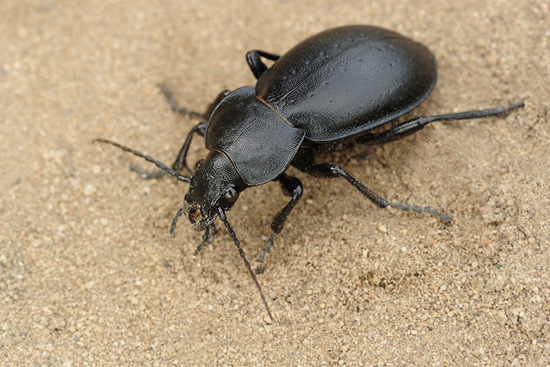

Carabus hungaricus is one of the few ground beetles that occur on the annex II of the Habitat Directive. It is a rare and restricted range species of the Pannonian steppe. Carabus hungaricus usually inhabits sandy grasslands and dolomitic grasslands. Szentendre Island still holds a viable population of this species on the sandy grasslands.
Under here two images of the beautiful Calosoma auropunctatum, another typical steppe species, which is a fierce caterpillar predator.
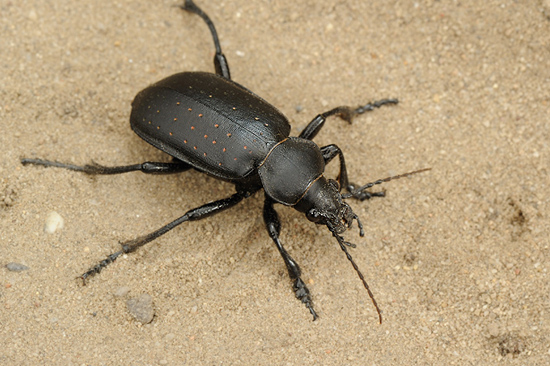

Calosoma auropunctatum occurs in the central and eastern part of the western palearctic region. It's originally a steppe species, which can also be found in fields and on arable land. In Western Europe it's a very rare and localized species, showing severe declines. More to the east of Europe it is still often very localized, but it can occur locally in larger numbers.
The sandy grasslands of Szentendre are also home to three Dorcadion species. All of them are typical Longhorn beetles from the steppe. Almost all the Dorcadion species are considered as good indicator species of the natural steppe grasslands or semi natural grasslands. They are flightless, which indicates that they live in stable environments, and they don't need to be able to cover regularly large distances to colonize new habitat. These characteristics explain why they are found in old semi-natural and natural grasslands.
Under here, images of Dorcadion fulvum (with the brown elytra) and Dorcadion pedestre (with white lines on its back).
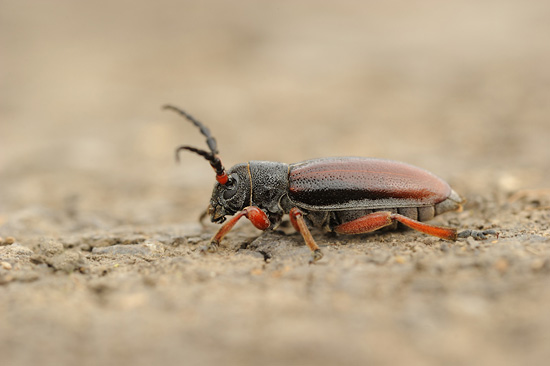

Finally, two images of Darkling Beetle species, Blaps halophila (first image) and Blaps lethifera (second image).
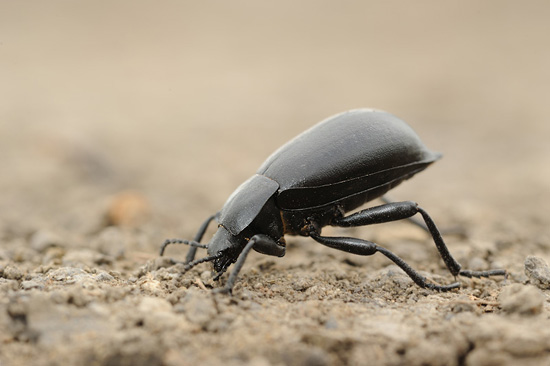
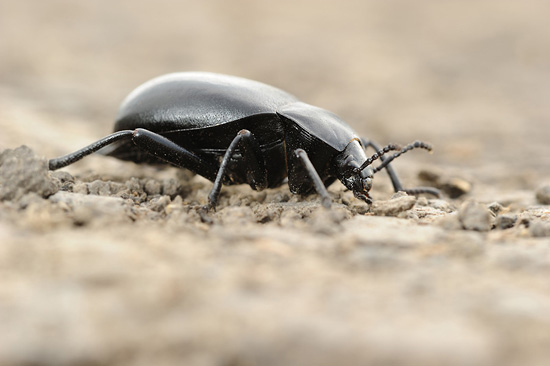
Many thanks to Nikola Rahmé and Sandor Berces who made it possible to photograph these species!
